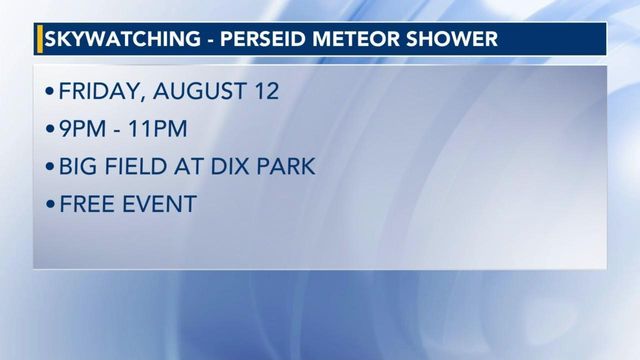Perseid meteor showers are set to be a showstopper celestial event
The Perseid meteor shower will grace the summer skies in mid-August as one of the biggest showers of the year.
Posted — UpdatedThe meteor shower will peak from midnight on August 11 to dawn on August 13 but actually runs from July 23 to August 22, according to The Old Farmer's Almanac.
Because the crescent moon will be setting early, the sky will be especially dark -- which makes for an optimal viewing opportunity, according to NASA.
Stargazers in the Northern Hemisphere will have a better chance of seeing the meteors compared to those in the Southern Hemisphere, NASA said.
Up to 40 meteors will be available per hour to people whose in the Northern Hemisphere viewing locations are far from light pollution, according to NASA. Your chances drastically decrease to only a few per hour if you try to view the meteor shower in a city.
People living about 30 degrees south latitude in the Southern Hemisphere won't be able to view the shower at all, NASA added, and those above the line in the Southern Hemisphere will only be able to see a few meteors per hour.
For the best viewing chances, give your eyes at least 20 minutes to adjust to the night sky, according to EarthSky. Set aside at least an hour to see the sky because the meteors come in waves, they added.
The fragments come from the comet known as Comet Swift-Tuttle, also known as Comet109P, which takes 133 years to orbit the sun, NASA said.
There are more meteor showers you can catch during the remainder of 2022, according to EarthSky's 2022 meteor shower guide:
October 9: Draconids
October 21: Orionids
November 5-12: South Taurids
November 18: Leonids
December 14: Geminids
December 22: Ursids
Related Topics
Copyright 2024 by Cable News Network, Inc., a Time Warner Company. All rights reserved.






